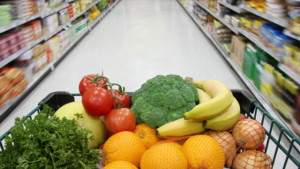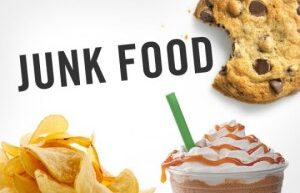
Clean Eating Grocery List
The single most important step when you make the decision to take your health into your own hands is to eat healthy. Making the correct choices at the grocery store is crucial, because how are you suppose to eat clean if you don’t have the right foods in the house? It may sound easy however the grocery store can be overwhelming with marketing and labels aimed to make you think their processed and prepackaged foods are “healthy.”
This Clean Eating Grocery List follows HASfit’s meal plans and outlines the essential foods for maintaining a healthy diet. We want you to eat a variety of whole grains, produce, organic in some cases, lean protein, nonfat dairy, and healthy fats. Clean eating also means avoiding processed foods such as white flour, sugar, juice, sodas, alcohol, trans fats, and bad saturated fats (read about the difference here).
Buy what fits into your budget and if your grocer has a bulk section, then stock up on nuts and seeds in only the amounts you need in order to save money. Another good way to save money is to buy frozen fruits, veggies, and some proteins in bulk as they can last a few months and you won’t need to buy them at every single grocery trip.
We’ve made the list printable and downloadable in a variety of formats:
PDF
Spreadsheet
Image Page 1 – Image Page 2
Whole Grains and Unprocessed Legumes – Whole grains digest slowly and therefore keep your blood sugar stable throughout the day. Beans and legumes are rich in folic acid, magnesium, and soluble fiber. Much like whole and cracked grains, they’re a low-glycemic food.
- Brown rice
- Quinoa
- Millet
- Freekah
- Buckwheat
- Barley
- Groats
- Steel-cut or rolled oats
- Sprouted grain bread such as Ezekiel bread and tortillas
- Lentils
- Black beans
- Chickpeas
- Black eyed peas
Vegetables – Lightly cooked, raw, and juiced vegetables are full of anti-oxidants, carotenoids, and flavonoids which are essential for fighting free radicals in your body. Try buying organic when possible and aim to eat a wide variety of colors.
- Spinach
- Kale
- Swiss chard
- Collard greens
- Broccoli
- Brussel sprouts
- Cauliflower
- Cabbage
- Carrots
- Beets
- Onions
- Peas
- Garlic
- Asparagus
- Mushrooms
- Tomatoes
- Sweet potatoes
Fruits – Just like veggies, fruits are loaded with flavonoids, carotenoids, and antioxidants that promote anti-inflammatory activities in the body. Try to eat a wide variety of colors and choose fruits that are fresh in season or frozen and buy organic when you can. Eat tropical fruits in moderation due to their higher sugar content.
- Blueberries
- Goji berries
- Strawberries
- Raspberries
- Blackberries
- Pomegranates
- Pink grapefruit
- Lemons
- Pears
- Banana
- Peaches
- Pineapple
- Oranges
- Avocados
Protein – Protein can help you shed the pounds and feel satiated, but knowing which kind of protein to eat is important. When choosing which proteins, try to eat organic and skinless poultry, choose Omega-3 enriched eggs, and natural cheeses. Try your best to stay away from highly processed meats which are also high in nitrates and sodium. Consume dairy in moderation.
- Grass fed lean meats
- Skinless chicken or turkey
- Low nitrate and minimally processed deli meats
- Eggs
- Salmon
- Tuna
- Herring
- Black cod
- Whole soy foods such as tofu, tempeh, edamame, or soy nuts
- Plant based or whey protein powders
Dairy and Dairy Free – Dairy products and dairy substitutes can be a great sources of calcium and protein.
- Greek yogurt
- Low-fat or skim milk
- Almond milk
- Hemp milk
- Coconut milk
- Low-fat cottage cheese
- Low-fat cheeses
Healthy Herbs and Spices – use herbs and spices to season your food as well as reap the health benefits such as detoxification and metabolism boosting properties
- Cinnamon
- Rosemary
- Thyme
- Basil
- Ginger
- Cilantro
- Parsley
- Turmeric
- Chili peppers
- Garlic
- Curry powder
- Cayenne
- Cacao powder or cacao nibs
Seeds and Nuts – healthy nuts and seeds offer Omega-3 fatty acids which are essential for brain function and cardiovascular health.
- Walnuts
- Hemp seeds
- Chia seeds
- Flaxseeds (ground flax is also good)
- Almonds (to include almond butter)
- Cashews
- Natural Peanut Butter
- Raw/unsalted sunflower seeds
- Sesame seeds
- Pumpkin Seeds
Oils and Condiments – aside from adding flavor, some condiments and oils can add to your overall health such as olive oil which is high in good fats and offers wonderful flavor that can be used to make your own dressings.
- Extra-virgin olive oil
- Coconut oil
- Sesame oil
- Black pepper
- Pink Himalayan Sea Salt or regular sea salt
- Dijon mustard
- Stevia
- Coconut palm sugar
- Apple cider vinegar
- Balsamic vinegar
- Maple syrup
- Honey
- Low sodium vegetable or chicken stock
- Low sodium Tamari sauce (gluten free) or low sodium soy sauce
Beverages – Water is the basic element of life and essential to our health. Aim to drink at least 8 cups of water throughout the day to flush out toxins and stave off hunger.
- Water
- Teas – Green, Oolong, unsweetened etc
- Kombucha
- Coconut water
- While we understand drinking plain water is a challenge for some, utilizing water flavors such as Crystal Light or Mio can be done in moderation.






Add comment